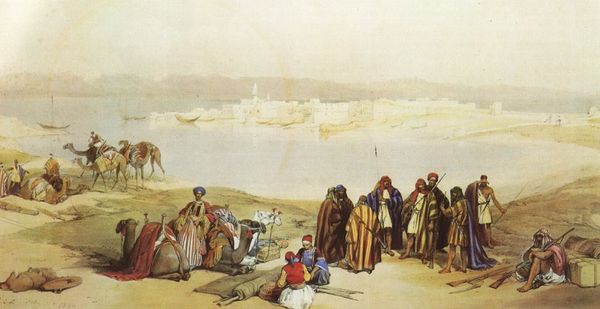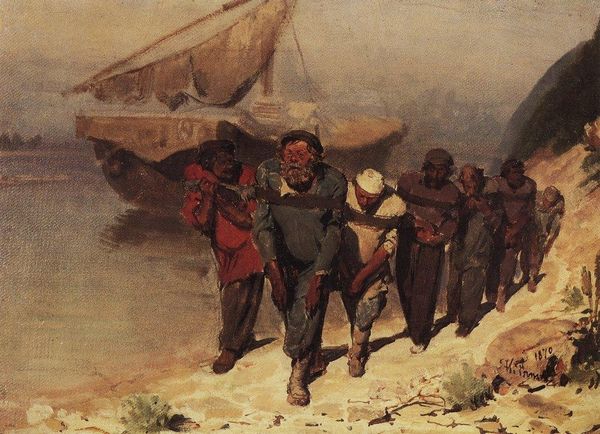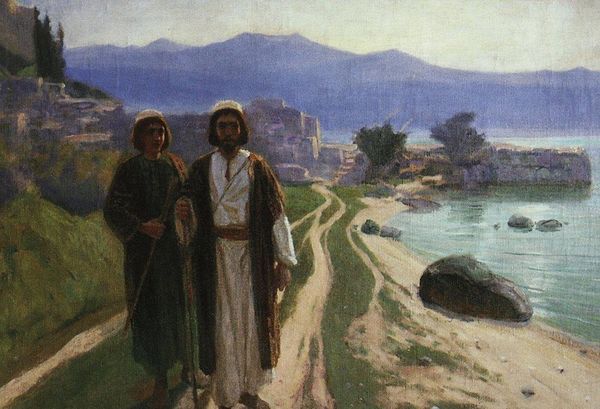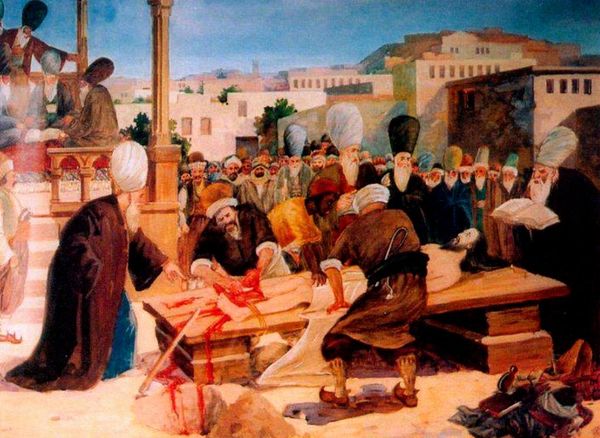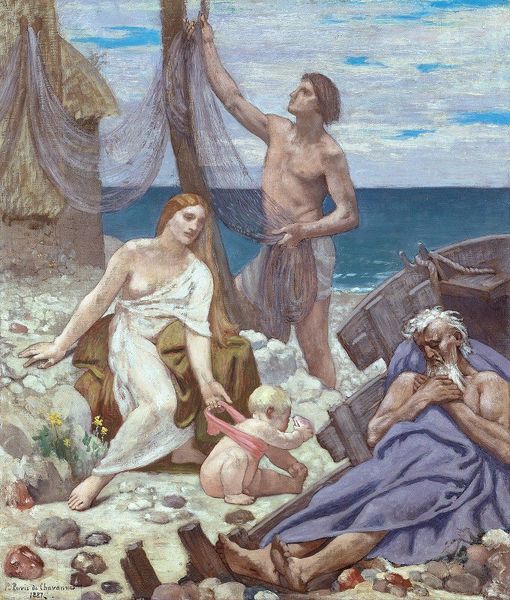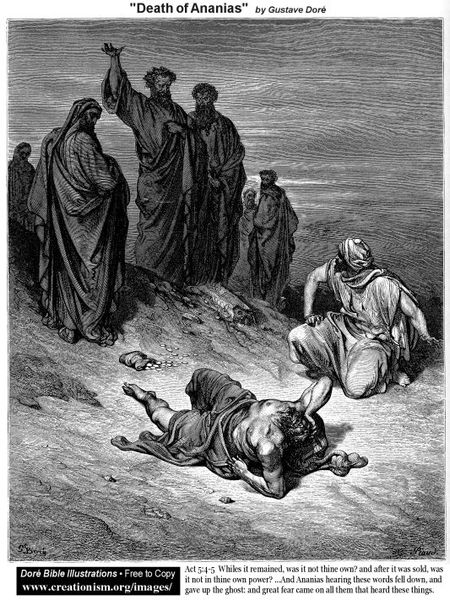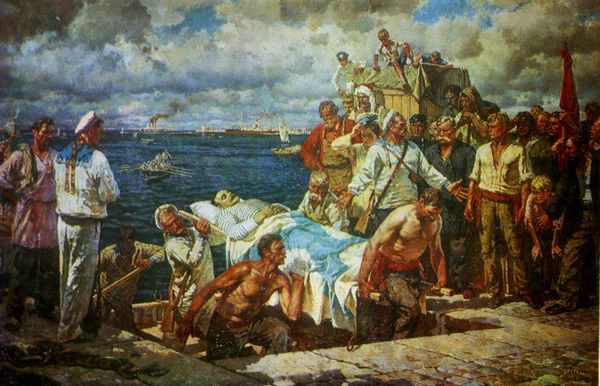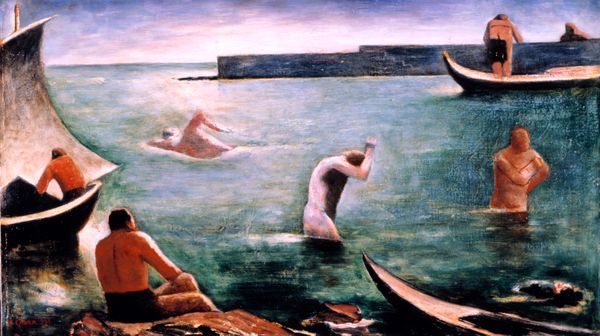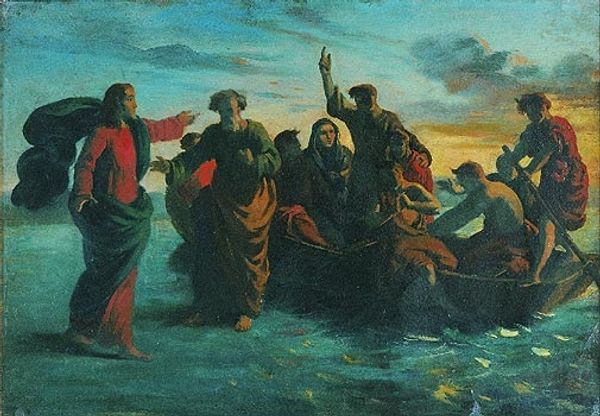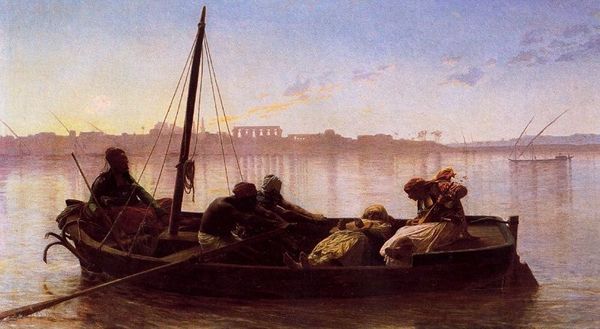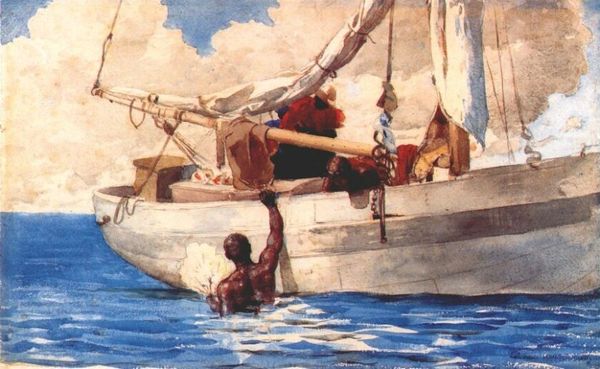
painting, oil-paint
#
narrative-art
#
painting
#
oil-paint
#
landscape
#
oil painting
#
christianity
#
history-painting
#
academic-art
#
realism
Copyright: Public domain
Editor: Vasily Polenov's oil on canvas, "The Limits of Tyre," painted in 1911, depicts a coastal scene with figures in what appears to be a moment of supplication. The palette is quite muted, lending the work a somber, almost melancholic air. What do you make of this painting? Curator: It's fascinating how Polenov uses light and shadow to convey both physical space and emotional depth. Consider the figure prostrating himself; the pose itself is laden with symbolic weight, isn't it? Humility, submission, perhaps even repentance. But towards whom or what? Editor: Perhaps toward the central figures standing near him? Curator: Precisely. And those figures, positioned against the backdrop of the city and harbor, are evocative too. Tyre, historically a Phoenician port, conjures images of ancient trade, cultural exchange, and eventual decline. Do you see the symbols of maritime power – ships, harbor walls – juxtaposed with the posture of submission? What cultural memories does that invoke for you? Editor: It suggests the rise and fall of civilizations. That power and prosperity aren't permanent. The act of kneeling perhaps acknowledges a higher power, beyond earthly limits? Curator: Yes, beautifully put. It begs the question: What limits does Polenov intend to convey? Geographical boundaries, certainly. But also perhaps the limits of human ambition, earthly power, or even understanding. The painting invites us to contemplate not just what we see, but what it represents across history, culture and individual faith. Editor: It is definitely thought-provoking. I initially saw a rather simple landscape with figures, but now it is clear that there are layers upon layers of symbolic meanings packed within this work. Curator: Indeed. That’s the beauty of art – to unearth those layers and reveal the ongoing dialogue between past and present, image and idea.
Comments
No comments
Be the first to comment and join the conversation on the ultimate creative platform.
